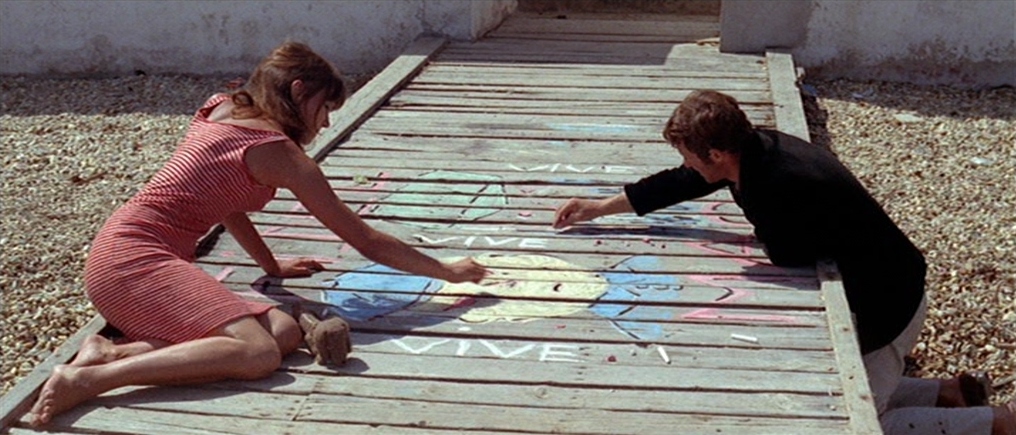When it comes to relationship compatibility in astrology most people are familiar with the synastry charts, but the chart that we actually look at and consider with greater depth is the composite chart. This is because the composite is the chart of the relationship itself.
You may have great synastry aspects, but if the composite chart isn’t very healthy or supportive for a long term relationship, the relationship may not be very healthy nor fulfilling; and at the same time, you may have hard synastry aspects, but if in the composite they soften, then it shows that the relationship has to potential to withstand any pressures and be emotionally fulfilling and healthy.
So today, let’s talk about some of the most important things to consider in understanding the composite chart, but first, what are the composite and synastry charts?
There is you, there is your partner, and then there is the relationship, the us – a land shaped as your energies merge together and what you may create upon it. Like any land, the relationship too has its own unique soil, needs, desires, cycles and seasons, stars and timings, and the potential for what may bloom and come into fruition.
Synastry, which literally means to “star together”, shows the dynamics between the couple, how they affect one another and how the energies blend and merge; it is the breeze that move them, the waves they move in, and their unique temperatures of skin to skin.
The composite chart is the chart of the relationship itself – it is the soil, the us. We go into its land to see the health and potential of the relationship long term, and the greater themes – the climates, the seasons, the landscapes the two may walk, and what may or may not be birthed on these lands or come into fruition. It also shows the path of the relationship overall, and you can see how it may be of benefit to each of the individual’s souls path in this life – especially if you seek alignments to their Navamsa charts (soul/dharma and marriage charts), or nodal axis.
While you can soothe some of the hard synastry aspects with mutual emotional maturity, compassion, patience and self awareness, you can’t really fundamentally change an unhealthy composite, which is why the composite chart is often seen as the outcome of a relationship; and it is important to analyze especially for couples interested in long term relationships and compatibility.
Composite means to blend something into one – to mix in all the elements and parts and create a new one thing; and the composite chart is essentially derived by taking the mathematical midpoint between each person’s planets and points.
While some couples may see hard aspects in their synastry and feel discouraged, what matters most is to see how the aspects are in the composite; because if the aspects soften in the composite, then there is a higher potential that these pressures or tensions or conflicts will not fundamentally hurt the relationship itself and the couple will find a way towards each other and stand the test of time.
Ideally, we want to see trines and sextiles mostly, though oppositions and conjunctions are fine also depending on what the planets involved are of course. Squares and inconjunctions can be very difficult to deal with, and it doesn’t necessarily mean that the relationship will end terribly, but it’s not going to be smooth and will require a lot of work, maturity and self awareness on both people’s parts. The squares can often make both partners feel like they aren’t entering a loving home but a battleground when they come home to one another.
Emphasis of planets in the 7th, 9th and 11th houses are amazing to see (unless it is Neptune in the 7th), and these placements often show resiliency to the relationship itself. It shows the couple’s willingness and ability to go through the fires together and stand the test of time; they can go through any external pressures and internal conflicts, and are able to build and sustain and share a deeper connection to one another.
7th house stelliums or emphasis show the couple’s deeper bonding and intimacy, and a closeness to one another as well as devotion to the relationship itself. If we view a relationship as a house within which two people live, the 7th house is the heart of their home and relationship, where they go into the warmth of their private cocoon or bedroom to share, talk, and invest time emotionally into one another. The more planets we see in a couple’s 7th house, the more it shows the two partners are devoted to one another and focused on the relationship itself; it shows they’ve really given their hearts and vows to this.
The 9th house is like the skylight in a house – it is where we look higher to remind ourselves of the right proportion of things, where we can remain grounded in a higher understanding and not sweat the small stuff, where we can be more forgiving and more expanding in our perceptions. 9th house emphasis in a composite essentially shows our ability to forgive, as well as our willingness to look to the horizons, expand, and it also shows love for travel, explorations and adventures. It may also point to some moral compass that the couple may be willing to follow or align to.
The 11th house emphasis is good as well, because it shows the friendship that they couple may share, and we all know that the foundations of a strong marriage is a strong friendship, where we can support one another and rely on each other.
When it comes to aspects in the composite chart, we would like to see more trine and sextiles. Saturn is important in the composite, just like it is in synastry, and preferably trine or sextile to planets like Moon, Sun and Venus. Saturn is the glue that holds two people together; it is what gives people a sense of responsibility towards another person, so naturally, this is what will keep a relationship strong and pull the partners towards working things out rather than treating one another carelessly. Oppositions and conjunctions to Saturn are fine also actually, and especially when connected to the Moon it often makes the two people feel as if it was meant to be, so it gives them a sense of responsibility and duty to work on their relationships. Squares however are not good, and neither are inconjunctions.
Moon aspects are important, trines and sextiles, as they show the emotional connection; and even if the Moon receives trine or sextile from a planet like Pluto that’s okay. Pluto aspects like trine or sextile are fine to have as they will show natural evolution and add some depth of relating, but squares, oppositions, conjunctions etc. from Pluto are not particularly healthy to see. And especially if the synastry already has hard Pluto aspects, the composite will just validate or confirm that this relationship may not be able to sustain with the Plutonian hard aspects; and it is also probably mirroring the partners’ individual natal relationships to their own inner Pluto or attachment issues that they need to individually work through.
Neptune aspects such as trine and sextile are okay to have, but just like Pluto any other Neptune aspects are not good to see; especially squares show deception and can be very hard to deal with, and usually the people don’t want to be told of these Neptunian veils, and may say “Oh no, these Neptune interpretations are not true, we are really in love,” until a few years later they are suddenly disillusioned and it can be quite painful for them. The trines and sextiles by Neptune can be sweet though, and can add some sugar and romance.
Uranus aspects often show on and off relationships, and a relationship that needs a lot of change, so Uranus aspects rarely support stable long term relationships. It’s not necessarily a deal breaker because it depends on the aspect and on each of the individuals and their own needs and ways of connecting, but Uranus is a strong force, so it will take what it needs – and what it needs is change. I’ve had actually a few clients with these Uranus aspects who were married for over ten years, and they ended up sleeping in different bedrooms – and again, that’s not necessarily bad, because the only reason their marriage even lasted so long is because they chose to sleep in different bedrooms. It was precisely this decision that soothed Uranus’ need for distance and freedom; and that way you can navigate through this is just visit each other’s bedrooms! Have some fun and find new ways of re-connecting and exploring one another.
At its essence, Uranus desires freedom and this is why it often creates sudden changes. So in order to give it what it wants, rather than waiting for it to shake up your life externally, you need to give it some space, fun and change; and if you don’t, it will create change by usually separation, conflicts or even affairs. The way to give it what it needs is to be creative and innovative, do spontaneous things to spice things up and re-explore each other, and accept each other’s needs for individuality and need for some freedom to do your own hobbies – but also, explore new things together such as hobbies or travel.
The elements of the composite are important also. Water and earth will show more intimacy, closeness and romance; air and fire will show more activity and extroversion. Mutable energy will show easier changes that you may go through and a higher level of perhaps agreeableness, while fixed energy may show the need to be more open minded, so that you don’t get stuck in patterns or mentalities no longer good for your relationship.
What about the Composite Ascendant?
Most Western astrologers have the consensus that the ascendant of the composite shows how the relationship is perceived by others and its overall image. But that’s merely the surface interpretation, so let’s dive deeper. From an esoteric and spiritual perspective, the natal ascendant is our path of life, and it is the portal through which we incarnated based on unfulfilled desires from past lives, and the ascendant is also part of the relationship axis showing the purpose of our relationships in this life as it relates to our soul’s purpose and evolution.
From this understanding, as the composite takes the midpoints, then the composite ascendant isn’t merely the image or appearance of the relationship, it is also a direction or path of the relationship that has come together. So the way I analyze and interpret the composite ascendant is I look at how this path and direction relates to each person’s soul’s path, and also, whether it makes connections to their Navamsa ascendant.
The Navamsa shows our dharma and it is also our marriage chart in Vedic astrology, but mainly, connections between natal placements and Navamsa placements show soul links between people. So when I see composite links to the Navamsa, which usually also echoes Nodal axis links in the natal charts, this confirms that this relationship is important for the higher path of both people; and regardless of how long it lasts, it is important for them to learn from it and experience it.
For example, a couple had Pisces ascendant in their composite, with a stellium in their 7th house. The man’s Saturn was in Pisces, so this relationship ultimately initiated him into his maturity as a man and inspired in him the feelings of being a husband and father; and he also met the woman during a time when the transiting South Node was conjunct his Saturn showing their past life link and strong soul connection. They had very strong synastry with Venus, Saturn and both North Node and South Node connections.
For the woman, the Pisces composite ascendant was conjunct her Navamsa ascendant and Jupiter, showing that this relationship inspired in her the faith and trust in deeper soul connections and a sense of destiny. It came together for her at a time when she needed to feel desired and awakened in love and passion – and it ultimately also stayed with her while she began her soul’s calling work.
For both of them, this Pisces ascendant in their composite wasn’t merely how others saw their relationship – it was a relationship whose purpose was to make them believe in love, open their hearts more and touch the intangible. Even though the relationship began as a long distance, they shared a romance and soul love that touched them deeply individually, but also together they lit each other’s flames of hearts. They shared dreams also, and a telepathic connection, because of their past life links, and the Pisces energy was trining both of their stelliums in water in their natal charts, so it flowed easily between them and was natural for them to be in a water-y world. It also inspired both of them towards greater surrender, trust and faith.
Turn back the clocks, when did you first meet?
One of the first things that I actually do for my clients is to turn back the clocks to the time they first met or began their relationship, and see what transits each of them were going through. This is going to give you great insights on some of the reasons why you met and the purpose of it as it relates to your path of life. And as you then move into the relationship lands of both your synastry and composite, you will be able to see even more threads uniting and deeper insights revealing themselves to you.
There is a reason why you enter into relationships with people, there is a reason why you love whom you love, there is a reason why you are attracted to whom you are attracted. While not all love stories will be life stories, all are purposeful, and are essentially an opportunity for a deepening. The sooner we realize the purpose and deeper spiritual lessons that we may learn and deepen into, the smoother it will be and the more harmony and peace we’ll feel, both individually and in our togetherness.
While the ascendant in the composite is an image others see, it is also what you see in your relationship – and why you chose, and still choose, to be in this relationship. If there are many planets on the ascendant, then the priority of the relationship is on how it is perceived and its image, so there may not be enough intimacy or deeper connection to keep you together through the fires.
The ascendant is the front door of a house.
In your natal chart, your ascendant is the front door which you opened to be born, and then explored the house for an opportunity for a deepening and self knowledge, and then you will one day exit the house.
Your composite ascendant too is a front door – it is the front door of a relationship between you and someone else. There are many doors of houses you will see along the streets of life you walk, so which ones do you choose to knock on and enter?
You need to reflect on this, because there are many people who stay in relationships because of how it looks, its image or perception, or their own projections onto it; many stay in relationships because of the dreams of it that they had, their ideas of it, their hopes, or their dreams of how they themselves would be in it.
And when you have a lot of planets in your composite ascendant, this shows you as a couple feel more attached to the front door, rather than the inside of the house and making it a home. In the example above that I gave you with the couple with the Pisces composite ascendant, they had a stellium in their 7th house, so all their energy was mainly in the heart of the house – the bedroom, the private space where they share, communicate, laugh, spend time together and connect to one another.
This is why the 7th house is so important – because this is the private cocoon we enter to create more warmth and hearth. But there are many couples who often are more attached to the front door and the porch, and they invest time and effort decorating it, but inside is just a structure with walls and furniture and there’s coolness; and yet they don’t leave the house nor change the dynamics, they just stay at the door, magnetized and wanting to decorate it even more.
Whatever the case may be of why you chose the door you chose, you may ask yourself – what is it here in our “us” that gives me what I seek, and how do I myself contribute to this and to our “us”?
This is the Venusian concept of relationships also – that it is about reciprocity. When you have a water Venus, it isn’t merely about seeking water from others, it is about how do you give water to others also? Do you nourish their soils, or do you take all water for yourself until the whole land for both of you is dry? If you have an air Venus, what kind of air do people breathe around you? If it is a fire Venus, do you burn others or do you uplift them and encourage them and help them rise higher? If it is an earth Venus, do you give people security and stability or are you an earthquake or desert and people’s hearts are not fed and their hands are not held?
The composite is a land, a soil, and both of you live there. Whatever one seeks one needs to be able and willing to give also. Whatever seeds and waters you pour into your soil, this is what will grow of it; however you chose to nurture it, this is what will show what will birth of it and what you may have to feed off of.
For personal readings with me, you are welcome to browse through my Offerings.

For more of my writings, browse through my Art of Love.
If you wish to support me and my work, you may do so by sharing it or donate here. For personal readings with me, you may visit my Offerings.
Your support means so much to me! Thank you wholeheartedly!
Cover art is a film still from the French movie Pierrot le Fou, 1965. All rights reserved to the artists.




